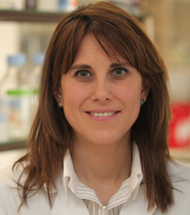Idoya Beltran Garate, Pharmacist and mother of a patient with diabetes subject 1
Maite Solas Zubiaurre, Professor of the Faculty of Pharmacy and Nutrition of the University of Navarre
Diabetes, a new scenario
More than 4 million people in Spain live with diabetes. Of these, approximately half are undiagnosed. Moreover, its incidence is increasing due to an increasingly sedentary lifestyle and new eating patterns in childhood.

 Diabetes is associated as a leading cause of blindness, dialysis, non-traumatic amputations and cardiovascular disease. Early and multifactorial treatment of diabetes delays the onset of these complications and improves quality of life and life expectancy. However, one of the most relevant problems in these patients is still the lack of adherence, which results in poor control of the disease.
Diabetes is associated as a leading cause of blindness, dialysis, non-traumatic amputations and cardiovascular disease. Early and multifactorial treatment of diabetes delays the onset of these complications and improves quality of life and life expectancy. However, one of the most relevant problems in these patients is still the lack of adherence, which results in poor control of the disease.
Such treatment must be based on the pathophysiology knowledge . Thus, in diabetes mellitus subject 1 there is a very severe insulin secretion deficit, and the only approach is based on the administration of insulin or analogues. In contrast, diabetes mellitus subject 2 is a much more complex disease therapeutically. In the early stages, insulin resistance predominates, while in more advanced stages, in addition, a deficit of insulin secretion is evident. Therefore, the therapeutic approach will depend on the stage of the disease and the characteristics of the patient.
In 1956 the first oral hypoglycaemic agent, tolbutamide, a sulphonylurea, was used to control diabetes subject 2. Subsequently, long-acting sulphonylureas and biguanidines, such as metformin, were marketed. The need for better control of the disease has led to new drugs such as incretin enhancers and SGLT-2 inhibitors entering the market in recent years.
Incretins are gut peptides that stimulate insulin secretion, while inhibitors of the sodium-glucose cotransporter subject 2 (SGLT2) are an emerging family that, in addition to being effective in glycaemic control, have cardioprotective effects of particular interest in patients with subject 2 diabetes, hypertension and obesity.
On the other hand, technology has enabled a great leap forward in the control of the disease and in the quality of life of patients, especially those with diabetes subject 1, thanks to the speed and ease of use of capillary blood glucose meters, insulin pens - which allow half-unit dosing (of great financial aid in paediatric diabetes) -, new insulin infusers, continuous glucose meters, flash meters and specific mobile applications for monitoring.
Among the most significant advances are continuous insulin infusion pumps in subcutaneous tissue. These pumps also allow bolus administration before meals, which gives patients the possibility of making their schedules as flexible as possible and adapting their administration throughout the day from agreement to the needs of physical exercise or carbohydrate intake.
In parallel, real-time continuous glucose measurement devices have revolutionised the monitoring of blood glucose levels, allowing better control and prevention of hypoglycaemia and hyperglycaemia without the need to perform punctures.
However, the technology may be accompanied by other risks, such as a rapid rise in blood glucose if there is a blockage of the pump catheter or the discomfort of wearing the device at all times.
New technologies and treatments - which will be discussed on 5 April at the I workshop of update of Pharmacy of the University of Navarra in Madrid, entitled "Diabetes, a new scenario" - present a promising future for the approach to the disease.
The pharmacy can check adherence, give advice on healthy habits and advise on the correct use of the new devices employment . Therefore, in order for pharmacists to assume the important role they can play in the care of diabetic patients, it is essential to keep up to date with the latest therapeutic and technological advances.
